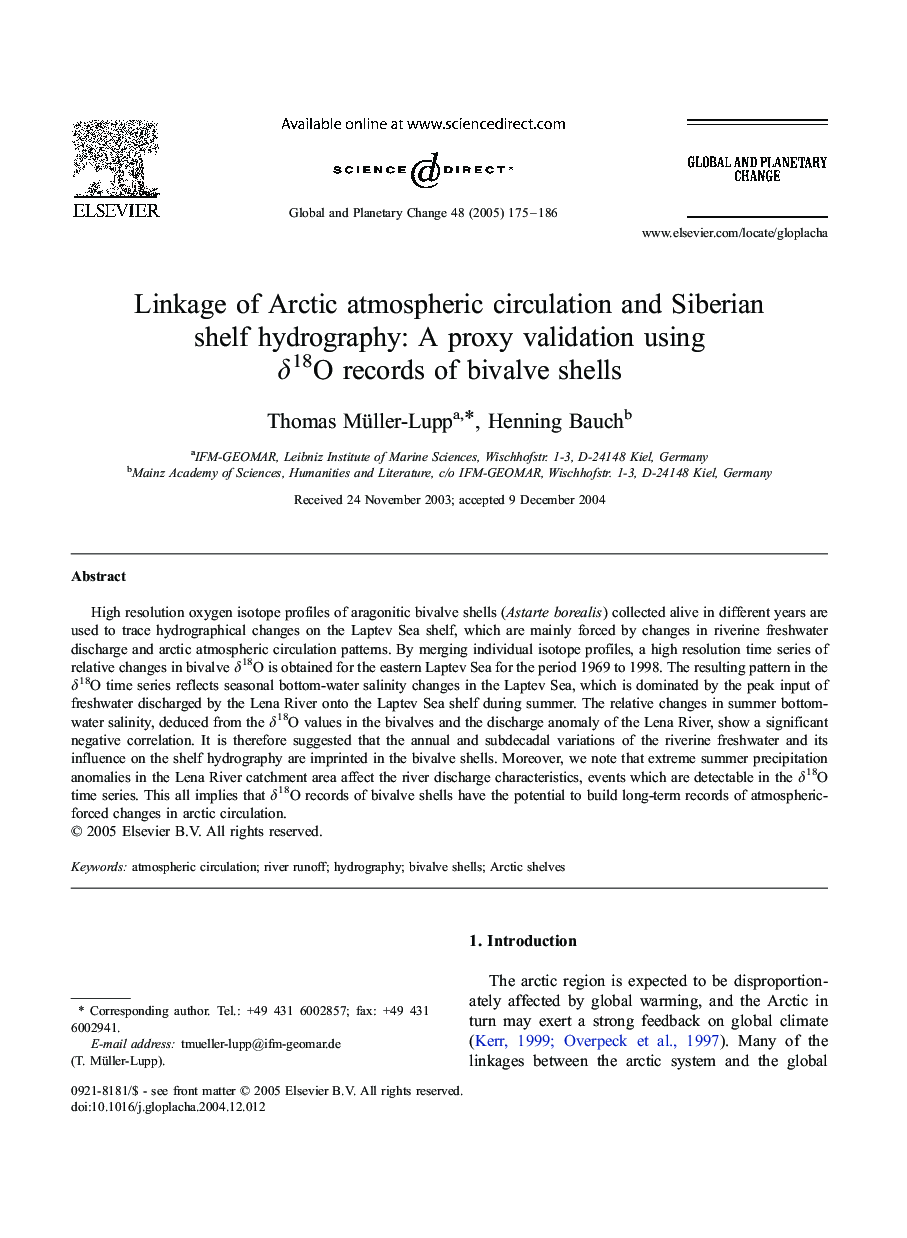| Article ID | Journal | Published Year | Pages | File Type |
|---|---|---|---|---|
| 9462543 | Global and Planetary Change | 2005 | 12 Pages |
Abstract
High resolution oxygen isotope profiles of aragonitic bivalve shells (Astarte borealis) collected alive in different years are used to trace hydrographical changes on the Laptev Sea shelf, which are mainly forced by changes in riverine freshwater discharge and arctic atmospheric circulation patterns. By merging individual isotope profiles, a high resolution time series of relative changes in bivalve δ18O is obtained for the eastern Laptev Sea for the period 1969 to 1998. The resulting pattern in the δ18O time series reflects seasonal bottom-water salinity changes in the Laptev Sea, which is dominated by the peak input of freshwater discharged by the Lena River onto the Laptev Sea shelf during summer. The relative changes in summer bottom-water salinity, deduced from the δ18O values in the bivalves and the discharge anomaly of the Lena River, show a significant negative correlation. It is therefore suggested that the annual and subdecadal variations of the riverine freshwater and its influence on the shelf hydrography are imprinted in the bivalve shells. Moreover, we note that extreme summer precipitation anomalies in the Lena River catchment area affect the river discharge characteristics, events which are detectable in the δ18O time series. This all implies that δ18O records of bivalve shells have the potential to build long-term records of atmospheric-forced changes in arctic circulation.
Related Topics
Physical Sciences and Engineering
Earth and Planetary Sciences
Earth-Surface Processes
Authors
Thomas Müller-Lupp, Henning Bauch,
